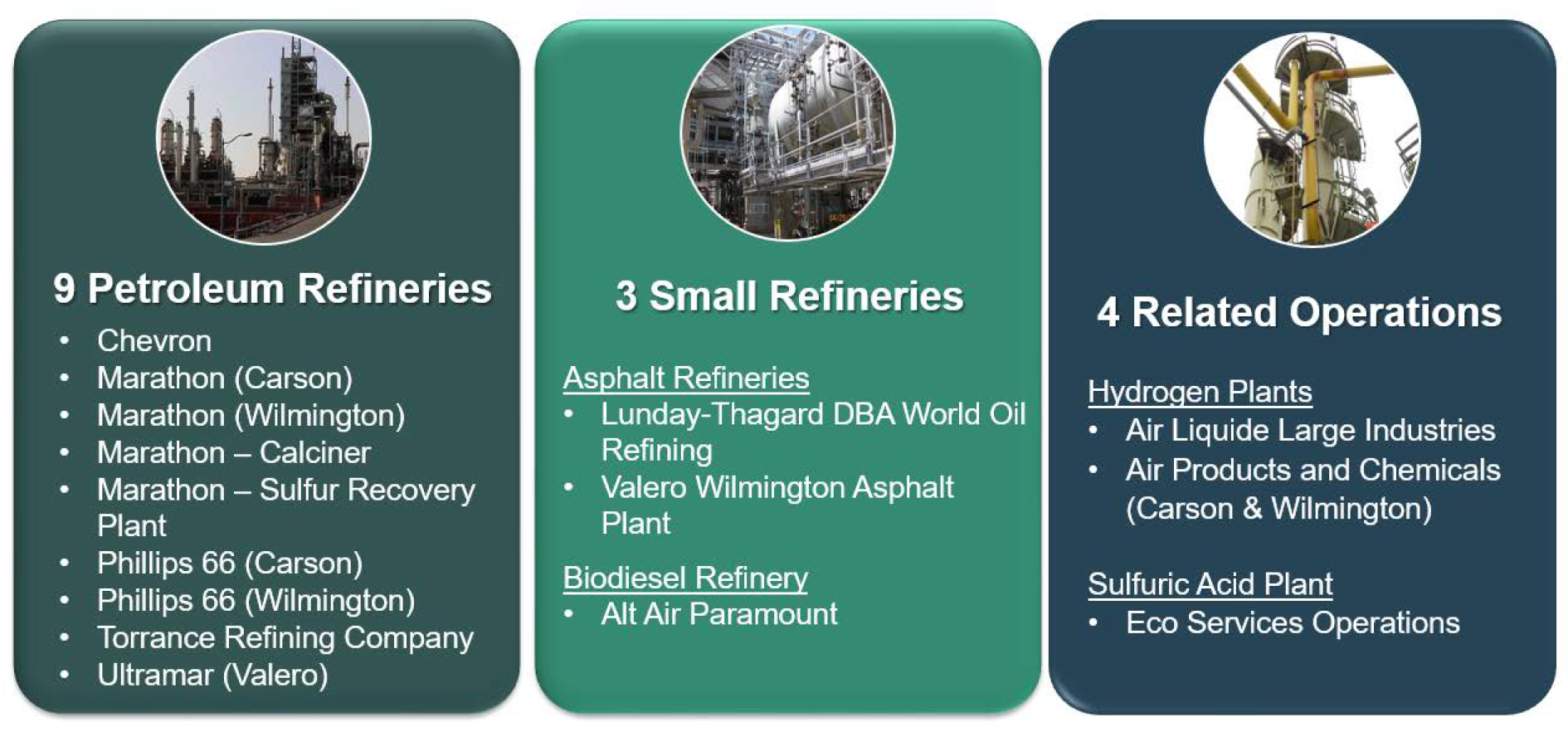Rule Description
Rule 1109.1 – Emissions of Oxides of Nitrogen from Petroleum Refineries and Related Operations, establishes NOx and Carbon Monoxide (CO) concentration limits that represent BARCT for combustion equipment located at sixteen petroleum refineries and facilities with operations related to petroleum refineries (e.g., sulfur recovery plants).
Information from the rule development, including Working Group Meeting presentations, third party assessments, and draft documents can be found on the archived Rule 1109.1 page.

Major Categories of Equipment
More than 284 units will be subject to the Rule 1109.1, with six major categories of equipment. Heaters and boilers are the largest equipment categories representing 80 percent of all equipment. There are many subcategories of equipment, especially in the process heater and boiler category which includes steam methane reformer (SMR) heaters, sulfuric acid plant furnaces, and startup heaters or boilers. The vapor incinerator category also includes several subsets including soil vapor extraction units, thermal oxidizers, and one small flare.
NOx Emissions Baseline and Reductions
- Rule 1109.1 Baseline Emissions is 12.4 tons per day
- Boilers and Heaters represent the largest source of reductions
- Upon full implementation, Rule 1109.1 will reduce 7.7 - 7.9 tons of NOx per day

Compliance Options
The established BARCT NOx limits will require approximately 220 pieces of NOx equipment to be retrofitted with pollution controls which range from $10 million to $70 million per project, and $179 million to $1 billion per refinery. In addition, these complex projects require significant engineering, design, planning, logistics, funding, order/delivery, installation, and commissioning.
To address complexity of the pollution control projects, Rule 1109.1 includes several compliance options: Conditional NOx limits for certain units that can meet specific conditions, an alternative implementation plan called an I-Plan, and two alternative BARCT emissions plans called a B-Plan and a B-Cap.
Staff released a Guidance Document to assist facilities complying with one of the alternative compliance options.